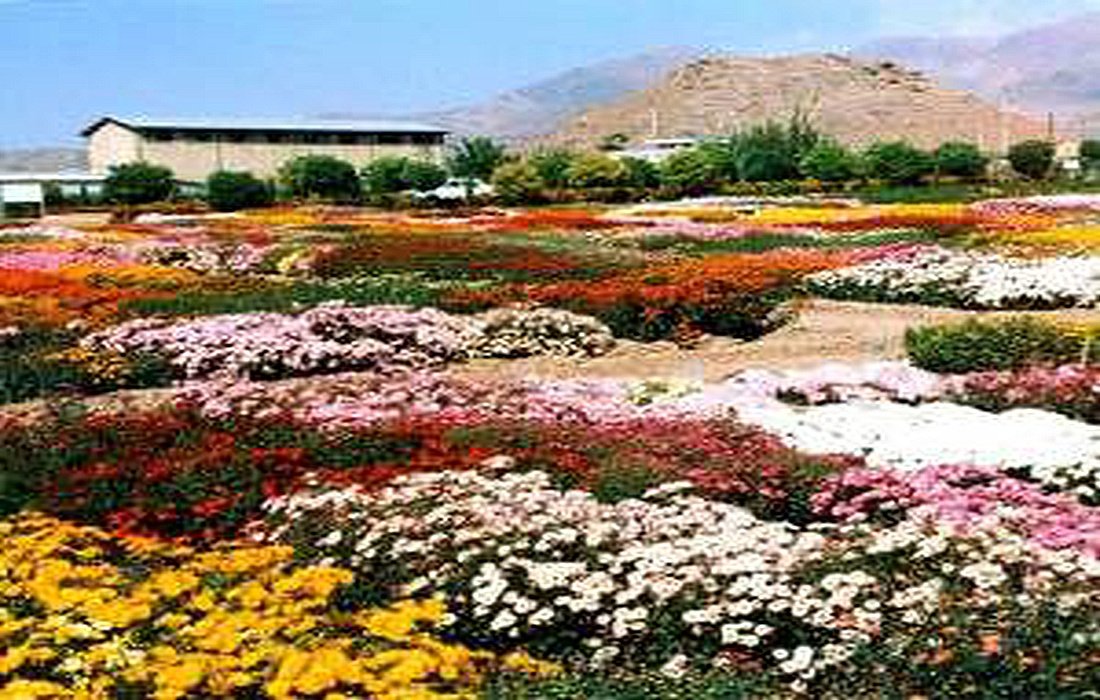Introducing pristine nature and tourist attractionsMahalat County
Mahalat County, located in the central province, is one of the most famous cities in Iran for flower and plant production. Besides its hot springs and pleasant weather, it narrates the ancient history of Iran.
An interesting fact about Mahalat County is that its historical background dates back to the Medes and Achaemenid era. This city, known as the “Netherlands of Iran,” is surrounded by Isfahan, Khomein, Arak, and Golpayegan.
This mythical paradise becomes filled with amazing flowers in May, turning it into a sanctuary for escaping the pollution of the capital. Besides its flower gardens, Mahalat is famous for its countless stone mines, with its houses showcasing marble and decorative stones.
A glance at the history of Mahalat city
Walking through the lanes of the city, you will definitely come across old textures and ancient artifacts. This county echoes with the sounds of history; here lies “Khoreh,” the place where the sun rises, which in Avestan means the same as “Khore,” denoting a pastoral area located in the northeast of Mahalat.
Research and findings in the plains and heights of Khoreh demonstrate that this area has been inhabited since the second millennium BC.
Interestingly, there are still individuals passionately searching for ancient artifacts, hoping to discover remnants from the Achaemenid and Median periods. The traditional and old texture of Khoreh has been preserved, with houses made of clay and wood.
The Mahalat Water Mill (the Don Quixote of the city)
As mentioned in the tourism sectionSelMagzMahalat is one of the counties rich in windmills. Perhaps the famed hero from Cervantes’ book, Don Quixote, should return to Mahalat’s windmills to continue his battle, but sadly, no traces of those mills remain.
According to one resident: “Mahalat was known as the city of mills. Life went on amid the scents of wheat and clay, yet for nearly four years, the old windmill of this city has been destroyed, and the fifth mill is also on the verge of collapse.”
The sweet dialect of an elderly Mahalati man recalls the demolished mills one by one: the Doghi Mill, the Bahrami Mill, which was the largest in the city, the Jambail Mill, and the Abro Mill are those that have been neglected and disappeared, with the fifth water mill also undergoing destruction.
Historically, the water mills, which are considered the most valuable in Iran, were used for grinding barley, wheat, and other grains.
One of the water mills located in Mahalat was registered as a national heritage in 1387 (2008). Due to recent neglect, this historical site has faced disinterest and, since it is privately owned, it has not yet been acquired, gradually turning into a dumping ground.
Officials attribute this situation to a lack of funds and are somewhat shirking responsibility. It’s quite regrettable that this site has become a shelter for chickens and roosters.
The mill is located on Cheshmeh Street. Cheshmeh is the name of Mahalat’s largest forest park, housing one of the most abundant springs in the central province, situated in the north of the city at the foot of the seventy peak mountain range.
However, the water mill of this county was not included in the Cheshmeh tourism project, with the head of the Mahalat council, Mohammad Reza Ali Mohammad, stating: “The Mahalat water mill is not considered part of the Cheshmeh tourism project and cannot be owned.”
In a recent meeting attended by the director-general of cultural heritage from the central province at the Mahalat Islamic Council, it was agreed that the cultural heritage department would organize efforts to acquire this site in collaboration with the council and the municipality.
It was stated that this mill is considered a historical site linked to cultural heritage, and it is advisable for this department to reach an agreement with the owners to take necessary ownership actions.
An interesting point is that up until now, no action has been taken by the municipality to maintain this site as the custodian of preserving historical structures in this city.
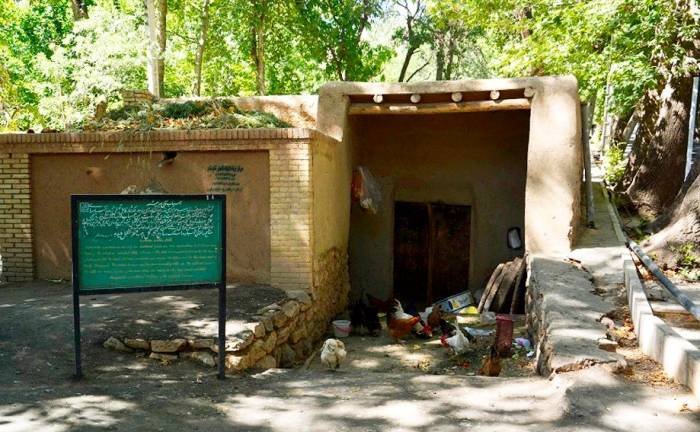
The two-thousand-year-old plane tree of Mahalat
Cheshmeh Street in Mahalat, like Vali Asr Street in Tehran, is greatly enhanced by its thousand-year-old plane trees, making walking there truly enjoyable. The historical symbol of this county is Cheshmeh Square. The majestic tree stands testimony to history; if you listen closely to the tree’s voice, you can hear its two-thousand-year-old memories, from the sounds of ancient water mills to the damp mud walls and the voices of Imamzadeh Fazl and Yahya, descendants of Imam Musa Kazim (peace be upon him). No one knows what happened to these historical sites, yet despite this, Mahalat is famously known as the flower city of Iran, adorned with picturesque alleys turned to stone.
The Yeke Chah Cave
This cave is one of the most fascinating and natural caves in the city of Mahalat, belonging to the third millennium BCE and extends through the middle periods of history after Islam. Due to the clay-covered floor of the cave, no water flow is visible; however, the halls, beautiful columns, stunning stalagmites, and unique stalactites create a breathtaking environment, drawing many tourists.
The historical site of Khoreh
The meaning of Khoreh in the Avesta is “the place of the sunrise”. This historical site is located in the northeast of Mahalat and is considered one of the oldest inhabited areas from the Parthian era and earlier, spanning approximately three thousand square meters, with only two round columns remaining at a height of 8 meters. Research conducted on the fallen columns has uncovered an ancient cemetery and a stone wall.
The architectural style of this area was done in a Greco-Roman style, leading experts to believe it was possibly a temple in ancient times. However, investigations showed that prior to Christ, this area was built as a lordly house and was used until the late Parthian dynasty.
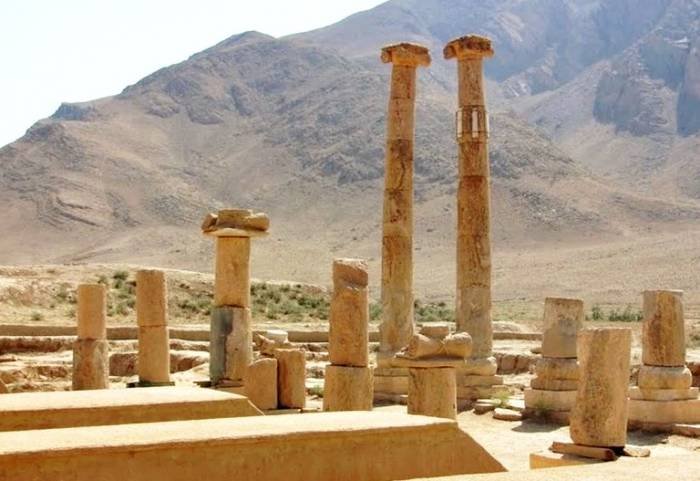
The Atashkadeh Atashkooh
Another beautiful historical site in Mahalat is the Atashkadeh Atashkooh, relics remaining from the Sassanian era, located five kilometers from the Nimvar road near the village of Atashgah. This area holds enough significance to be considered one of the top Zoroastrian fire temples in the world.
The structure was built using stone and square bricks, not only for durability but also with wooden beams placed inside the walls. The design of its columns is so delicate that no two stone blocks are ever placed on top of each other.
The Cheshmeh Park of Mahalat
One of the most popular natural and touristic attractions in Mahalat is Cheshmeh Park. The importance of this park is heightened due to the presence of the most abundant spring in the central province, located at the foothills of the seventy peak mountain range, the highest point in Mahalat.
On weekends and holidays, this pleasant and cool location becomes a popular hangout for tourists and locals alike. This park provides numerous facilities, including an amusement park, restaurant, flower and plant production and sales center, and traditional tea house, ensuring visitors have a complete set of amenities.
The flower and ornamental plant village
It might be hard to believe that Mahalat is one of the largest flower-growing villages in the whole country, but it encompasses a vast area of 110 hectares where beautiful and decorative flowers are cultivated, prepared, and distributed, making it a unique paradise for flower lovers.
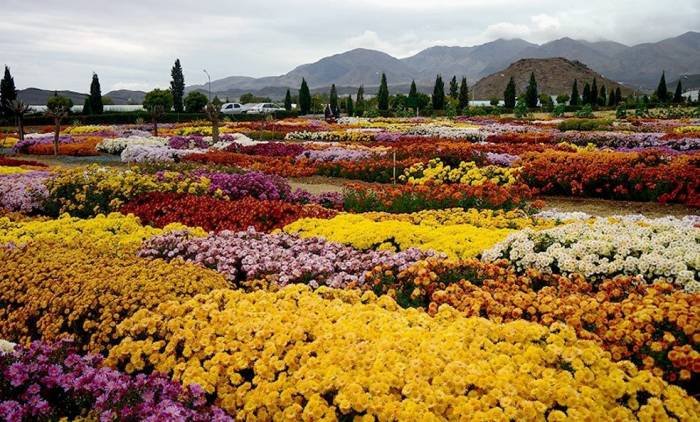
The hot springs
Located 15 kilometers from Mahalat city, the hot springs emerge from deep within the earth, with temperatures reaching at least 50 degrees Celsius, and are among the 26 famous hot springs of Iran.
The special popularity of these springs is due to their therapeutic properties, attracting many domestic and international tourists. The locals believe these springs miraculously cure biliary, liver, kidney, and gastrointestinal diseases.
The Azad Khan Cave
This ancient cave is located 10 kilometers northwest of Mahalat, north of the village of Sanjeh Bashi. The cave contains abundant and potable water from rainwater dripping from its ceiling.
The Shah Bolbol Cave
Besides being a natural attraction, the Shah Bolbol Cave holds a special sanctity among the people of Mahalat. It is situated in the eastern heights of Mahalat.
Although this cave is neither as vast nor as old as other caves, it is seen as a revered and sacred place by the people of Mahalat, where locals go to pray for their wishes and bring offerings for the needy.
The shrine of Shah Qalandar
One of the historical structures in Mahalat city is the shrine of Shah Qalandar, located at the foothills of Mahalat mountains in the village of Anjadan. This site is attributed to Shah Qalandar, a leader of the Ismaili sect, with the construction dating back to the Ilkhanate period. The shape of this historical and remarkable building is octagonal, with beautiful brick arches on each side.
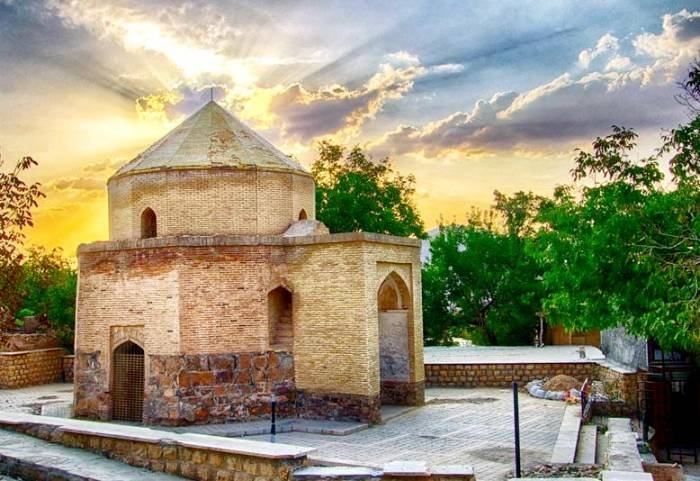
The Jamshidi Castle
The Jamshidi Castle, also known as the Gabr Castle, is another archaeological site in Mahalat, a remnant of ancient Iran. This castle has withstood the attacks of invaders better than other historical fortresses and once saved the local people.
This amazing and attractive cave has very unique features, such as wooden gates for protection, special fire-resistant tools, and a hall on the castle capable of hosting 20 archers from various directions, enticing tourists to visit.
The ancient Baqirabad Bridge
This bridge, dating back to the Qajar era, is located in Mahalat, made with stone, and has undergone renovations and restoration in subsequent periods.
The Cow Hole Cave
The Cow Hole Cave is located in the northwest of Khoreh village. It is said that when the Lor nomads invaded this area for looting, the locals hid their valuable possessions inside this cave. Interestingly, a small and beautiful spring can be seen at the end of this cave.
The ancient Nimvar Dam
Located 7 kilometers southwest of Mahalat city, the historic Nimvar Dam was built during the Sassanian era for water storage. This famous dam is 1,000 meters long and 9 meters wide, situated directly along the path of the Qamarud and Lalbar rivers. Due to the lush nature surrounding this dam, it is a popular leisure spot for both domestic and foreign tourists, making visitors forget their experience visiting this beautiful dam.



